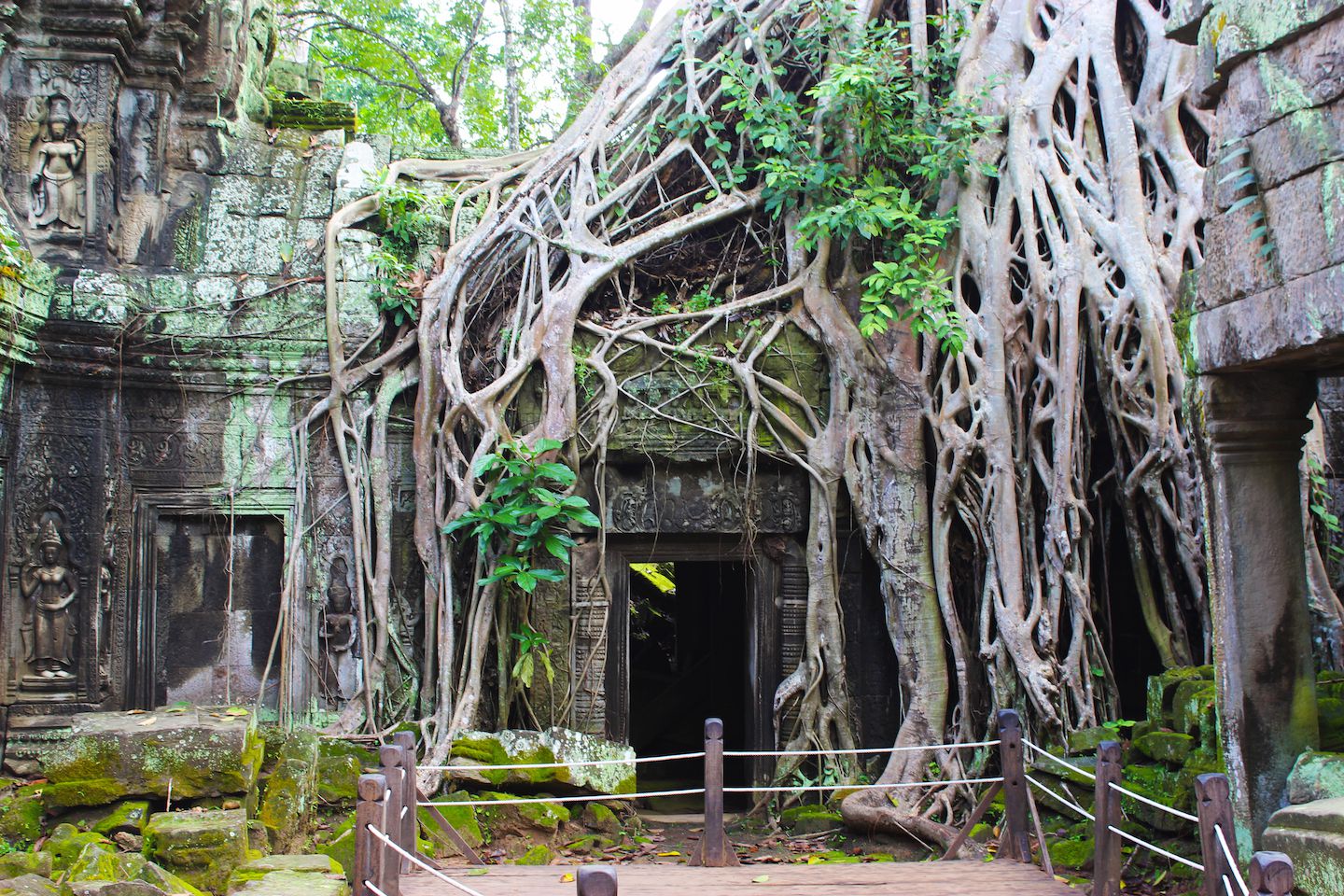This is part II of the Exploring Angkor series of posts on Angkor Archaeological Park.
Exploring Angkor
Part I: Angkor Wat
Part II: Eastern Angkor
Part III: Angkor Thom
Part IV: East Baray and Banteay Srei

After exploring Angkor Wat on the first day of our park pass, we took a tuk-tuk to explore the surrounding temples in the central and eastern Angkor regions.
After another failed attempt to see the sunrise at Angkor Wat, we headed east to start the small circuit of temples. The usual route for tour groups begins at Angkor Wat and loops around west, but following recommendations from a lovely Australian couple we met in Ha Long Bay, we inverted the route. That made all the difference as we avoided the crowds and had most of the temples to ourselves. Thanks Jill and Derek!
Banteay Kdei
The first stop in the loop was Banteay Kdei. A Buddhist temple with face towers at the entrances, it was built under the reign of King Jayavarman VII in the late 12th century. This temple (like many others) had a central sanctuary with two libraries, a hall of dancers, a terrace with naga balustrades, as well as moats surrounding it.
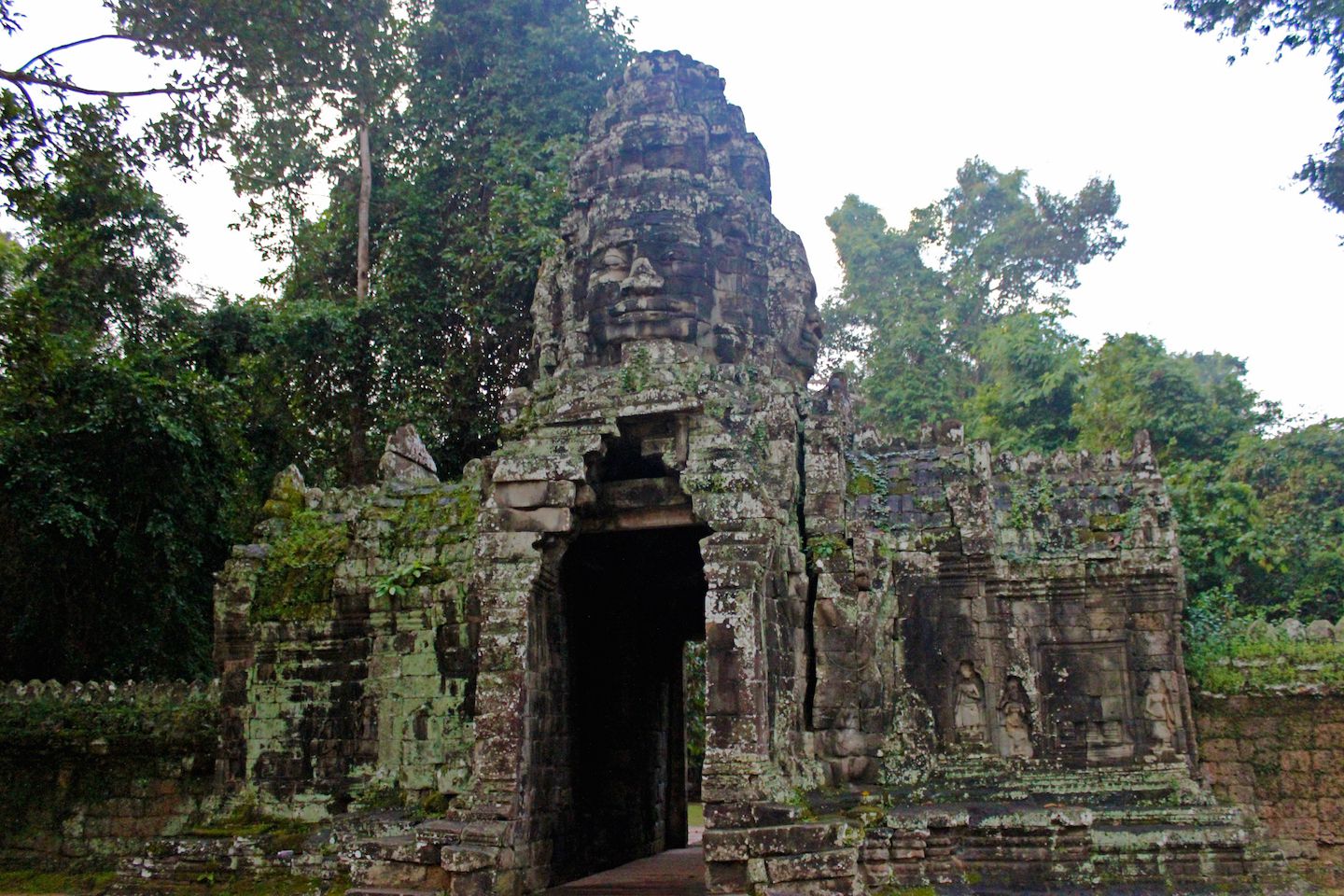
The area covered by the buildings was fairly big, though not comparable to Angkor Wat. It took us about an hour to explore on foot the area from the east to the west entrance, connected in a straight line. For most of the time during our visit, we were the only two people in the entire temple area, which was a very special experience. This was also the first “open” temple we have been to – all the structures had only the ground level with no big walls surrounding it. Nature took control here over the years, with moss on nearly every stone and vegetation growing on the roofs and around the structures. I had never seen ruins like this before and it had a strange kind of beauty.

Most of the buildings were pretty well conserved, with just a few being held together with wood. Some of the remaining towers had wires looped around to keep all the outer pieces from falling. Walking through Banteay Kdei was like discovering ancient ruins in the wild – it was pretty exciting to explore our first temple outside of Angkor Wat.

Ta Prohm
For fans of Tomb Raider (like us), this was where Angelina Jolie filmed the scenes that made the whole Angkor complex famous. We arrived here at 7:30am and there was close to nobody in the temple grounds – not even a line to take pictures at the infamous tree-strangled door, where the fictional character, Lara Croft, picked up a jasmine flower before falling into a hidden room. Had we come two hours later, we heard a guide say that we would have had to wait at least 20-30 minutes to take a picture.

Similar to Banteay Kdei, Ta Prohm was bigger and more exaggerated. With bigger and more numerous galleries, huge trees grew on the temple rocks throughout the temple. The arrangement of the corridors and rooms was very complex with several concentric galleries and many later building additions to the complex. Restoration groups chose to keep the temple in a more “natural” state, keeping the presence of hundreds of years of nature instead of restoring the temple to its initial state. This better represented the way ancient temples were when found in the 17th century, giving it a more romantic appeal.
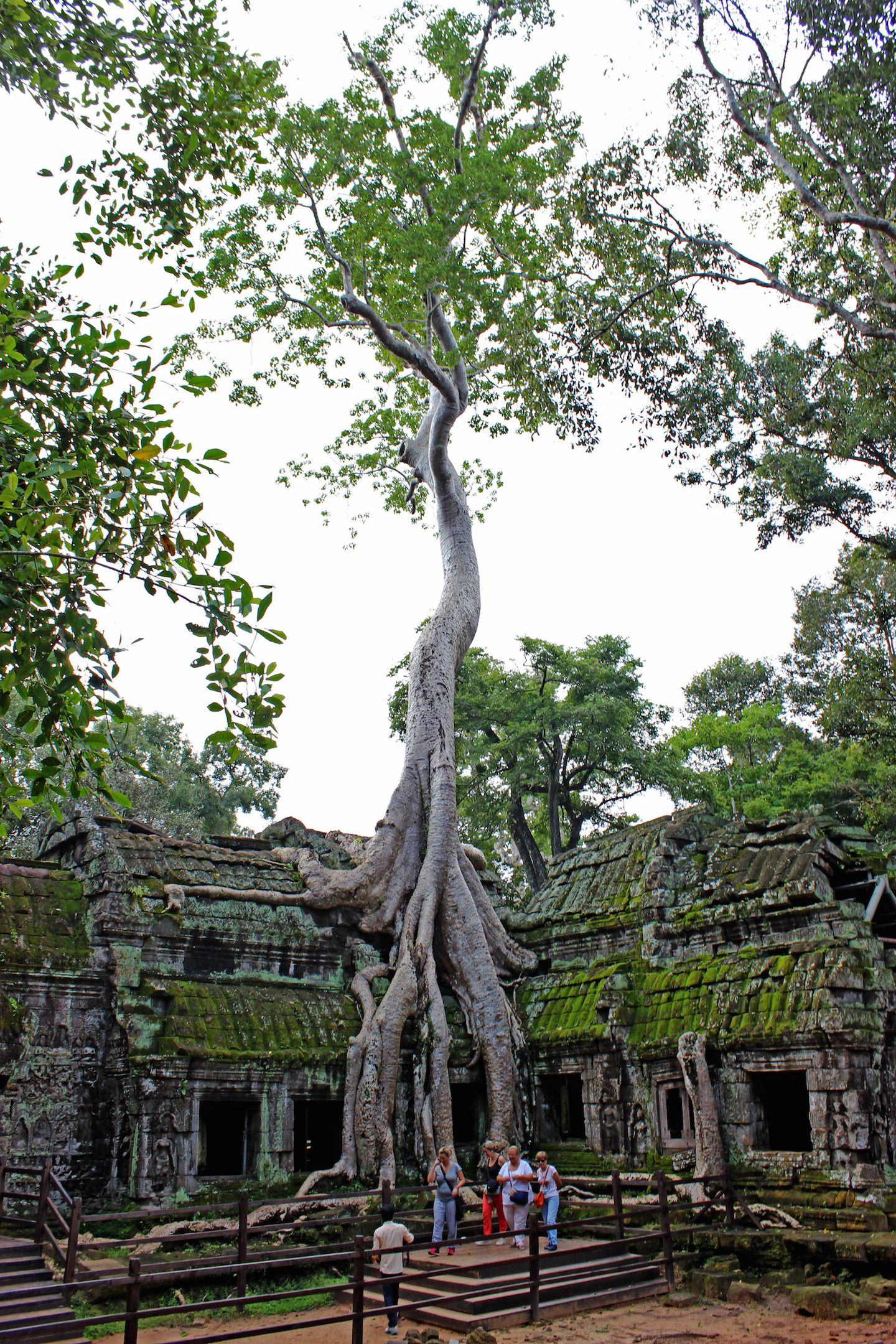
Ta Prohm was another project by King Jayavarman VII. During its prime, some 12,000+ people lived inside the walls of the temple. The deities in the temple were changed over time and the latest ones were chosen to please the king’s mother.
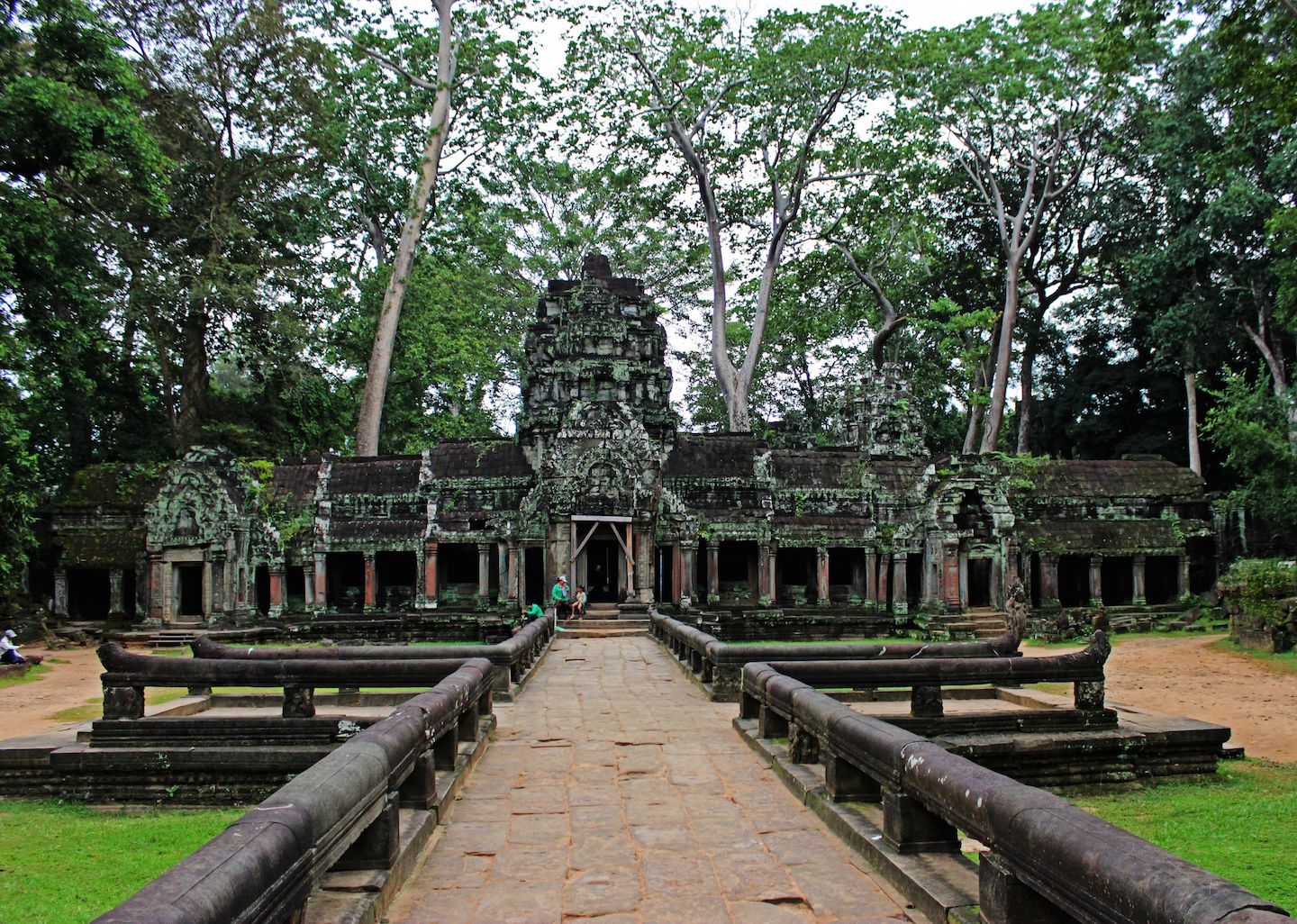
Ta Prohm was definitely one of the coolest temples we saw, and also one of the most popular for all tourists. We’re so glad the temple was kept in its natural state, because it looked magnificent. I have never seen anything like it my entire life – huge trees growing on top of the stone structures with roots draping over the corridors and growing between rocks. It was like nature moved in when the people left; but in harmony with what remained of the temple.
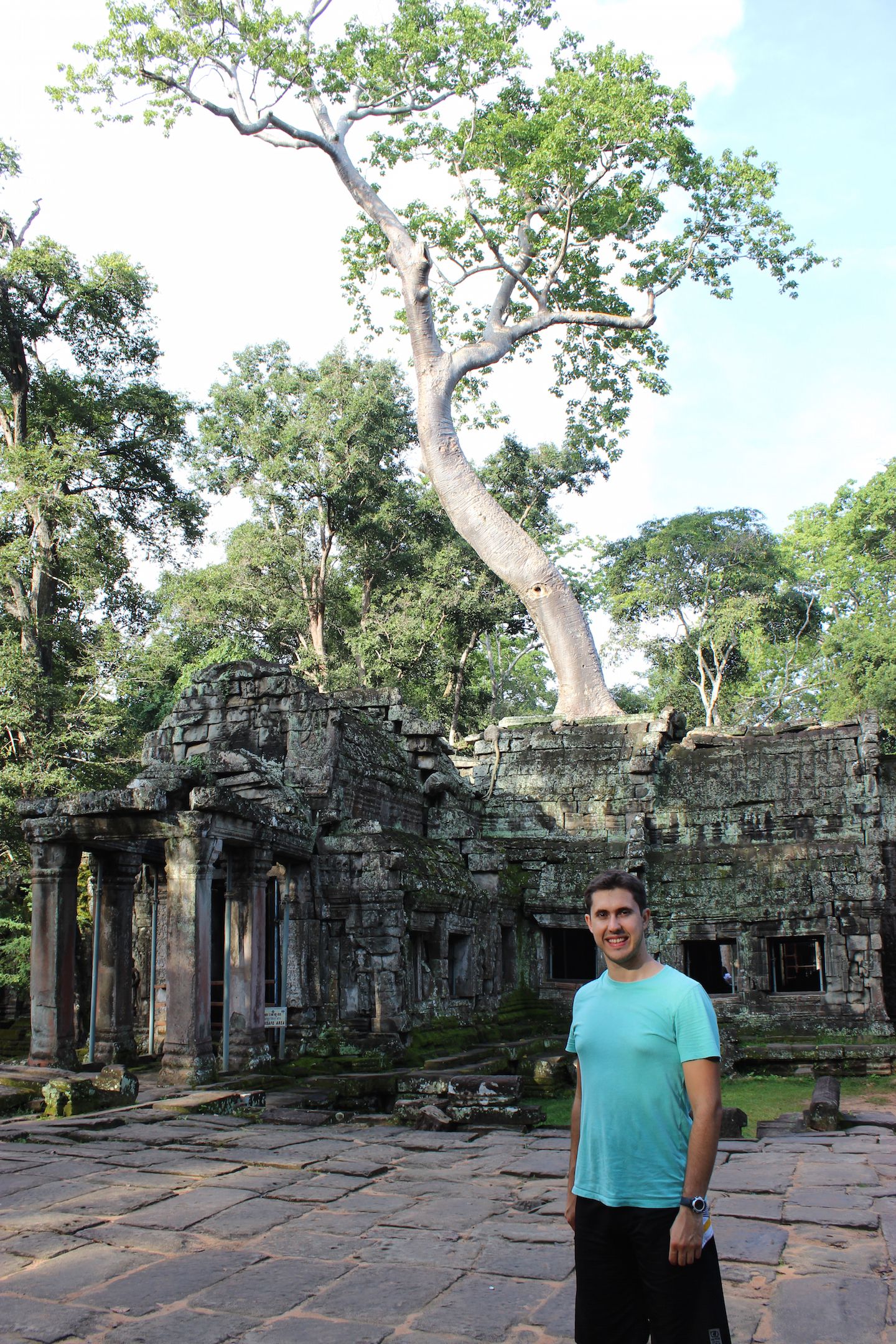
Ta Keo
Ta Keo was different the the previous two temples we visited. Upon arrival, we noticed that the massive temple was a lot like a giant mountain. Carving work on the galleries had just begun when work on the temple stopped, thus giving it a more simple look. Ta Keo seemed very compact, but yet robust and monumental.
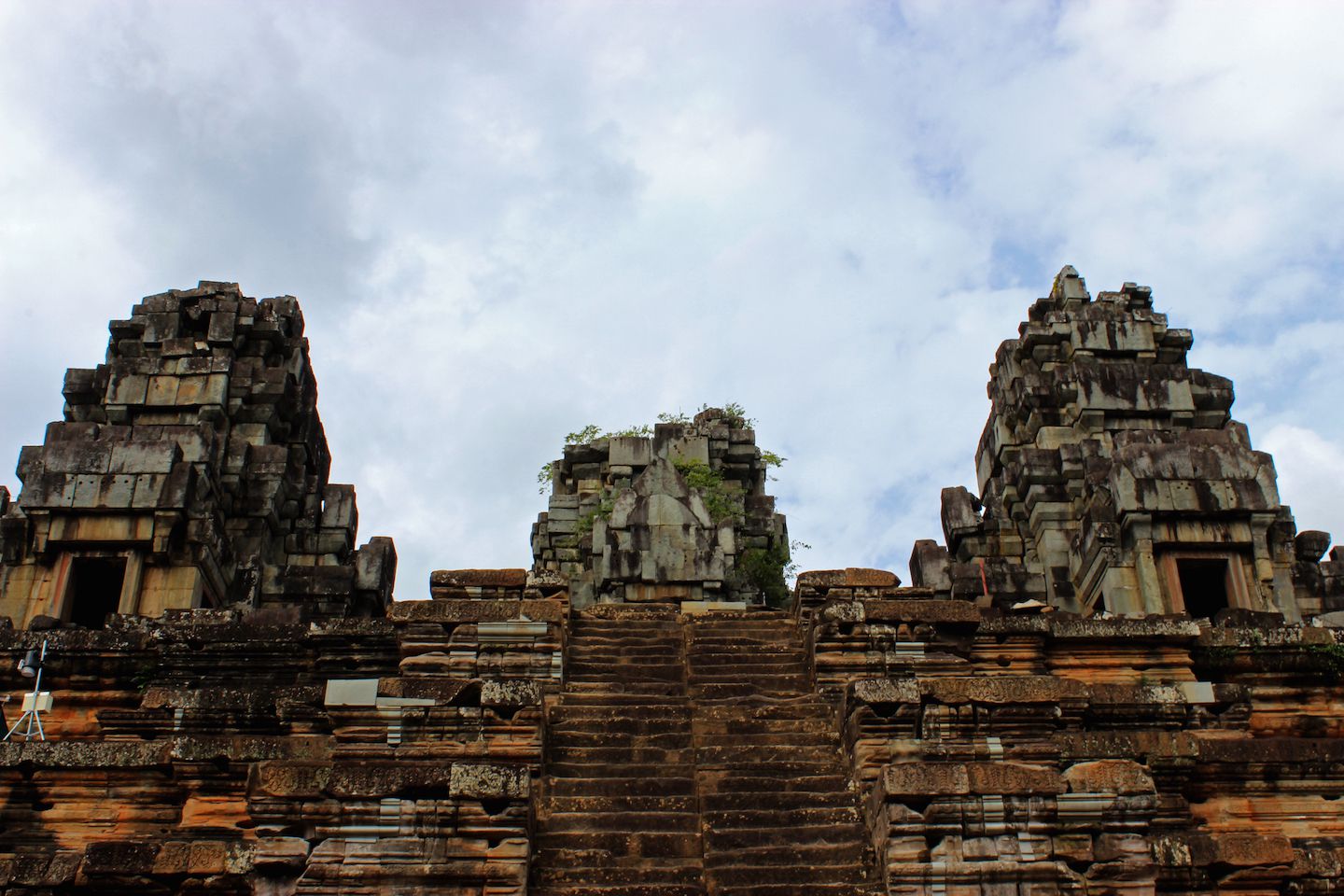
A very steep stairwell led the way to the five top towers that, just like Angkor Wat, represented the five peaks of Mount Meru. The entire temple was built using laterite and sandstones (like many Angkor temples), piling up to an impressive 21 meters.
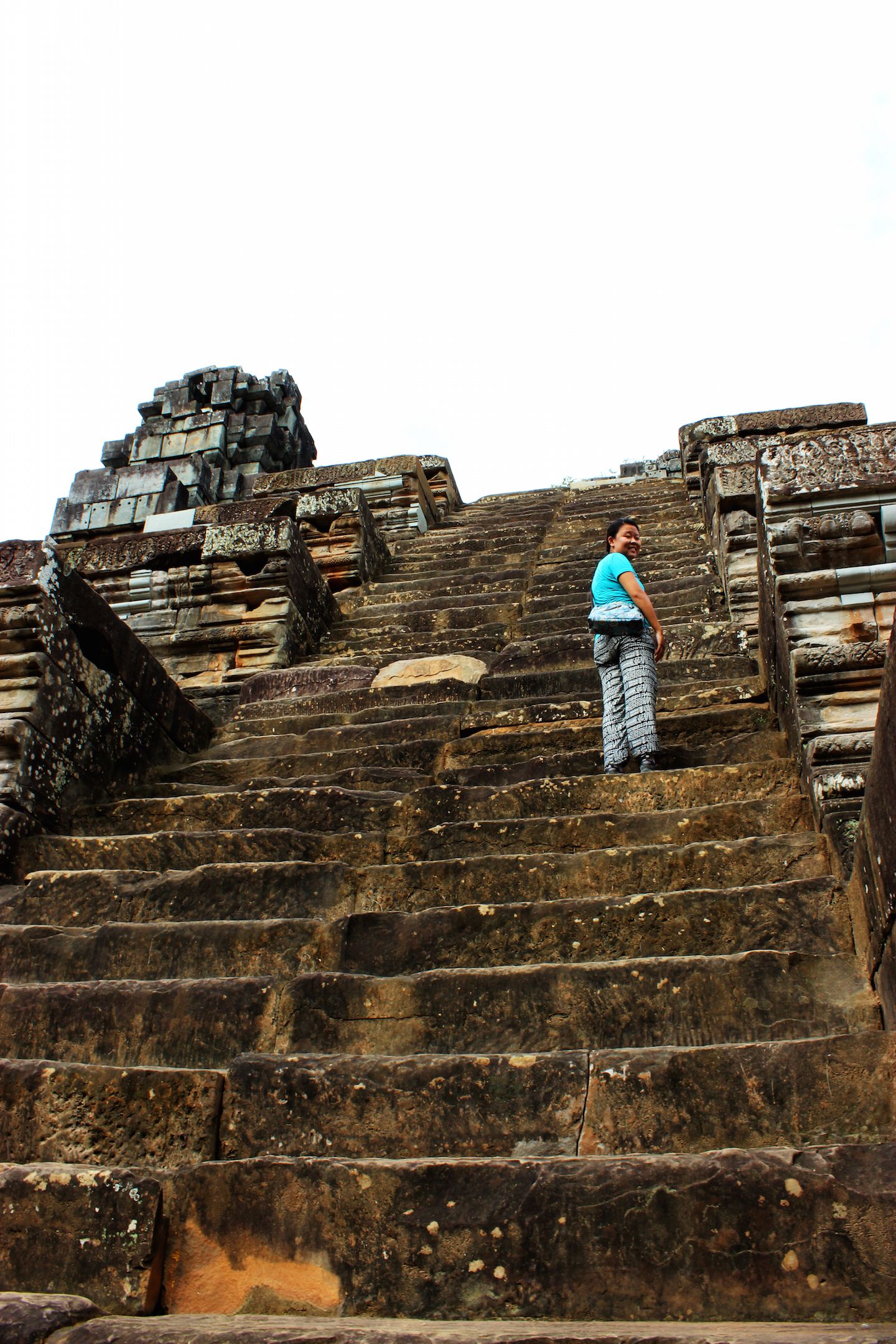
Climbing up the stairs all the way to the middle tower gave us a rewarding view of the forest around the temple. Ta Keo was a quick, but refreshing visit. Seeing different types of temples helped us to appreciate each style more, especially as some temples look very similar.
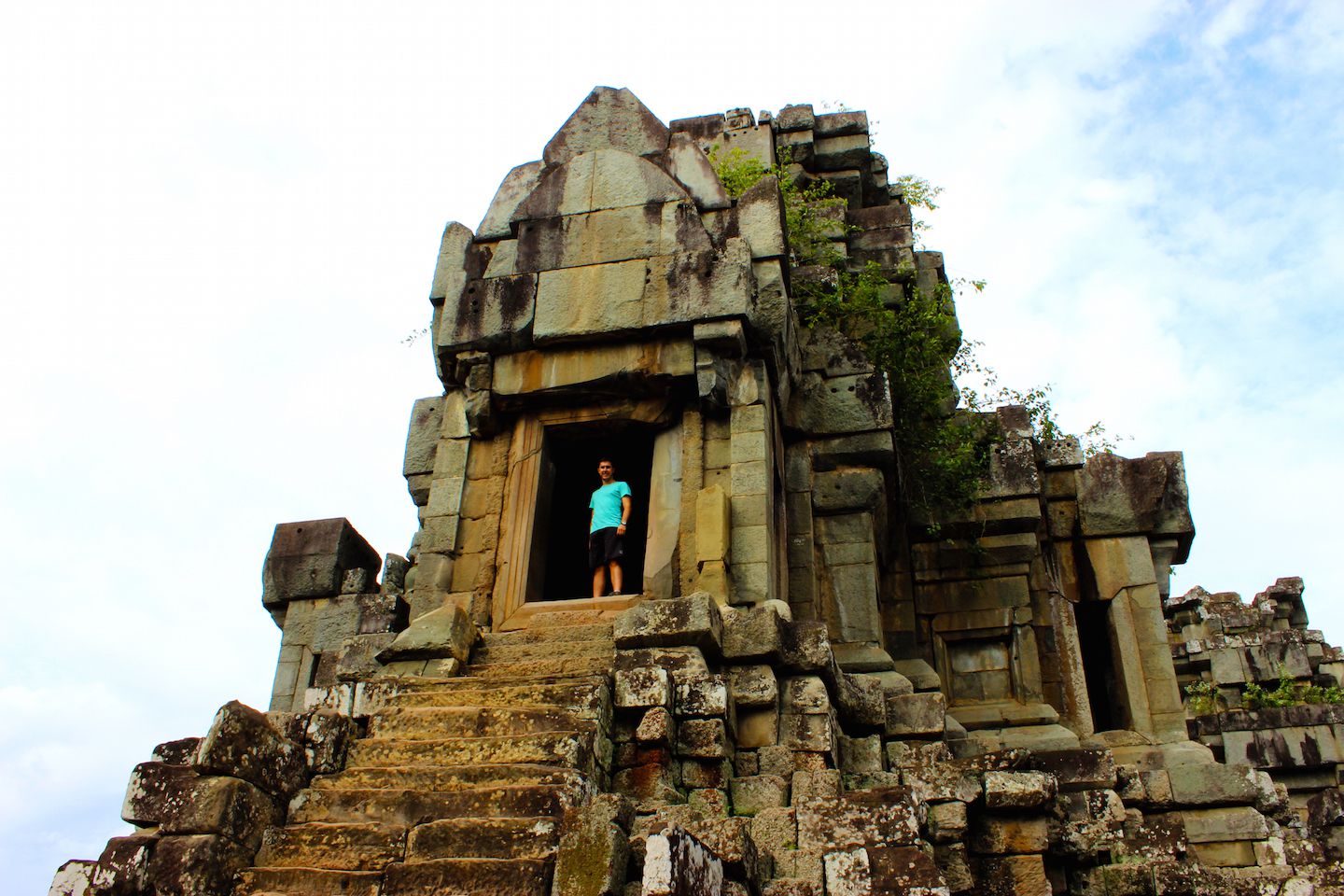
Thommanon / Chau Say Tevoda Temple
Thommanon was a rather small but elegant temple. It resembled the work of Angkor Wat – this made sense as it was also built during the reign of King Suryavarman II. Across the street from Thommanon was another temple with similar proportions and style known as Chau Say Tevoda.
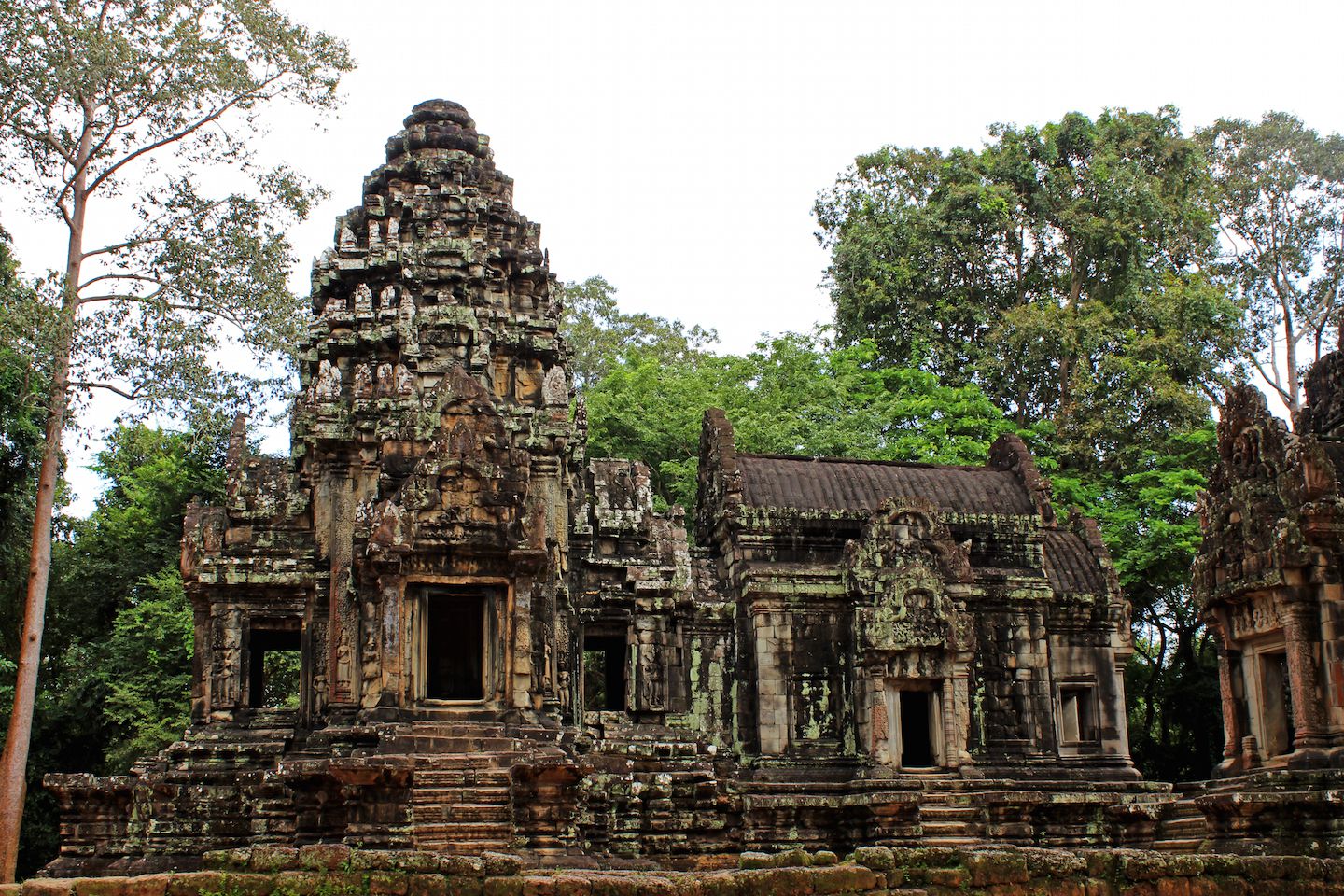
Both Thommanon and Chau Say Tevoda temples had only one level – or at least what remained of them. Instead of one large connected structure, what remained of both temples were small rooms spread out over a patch of land. A library here, a few steps there. Both temples seemed to be in a ruined state, like an abandoned site.
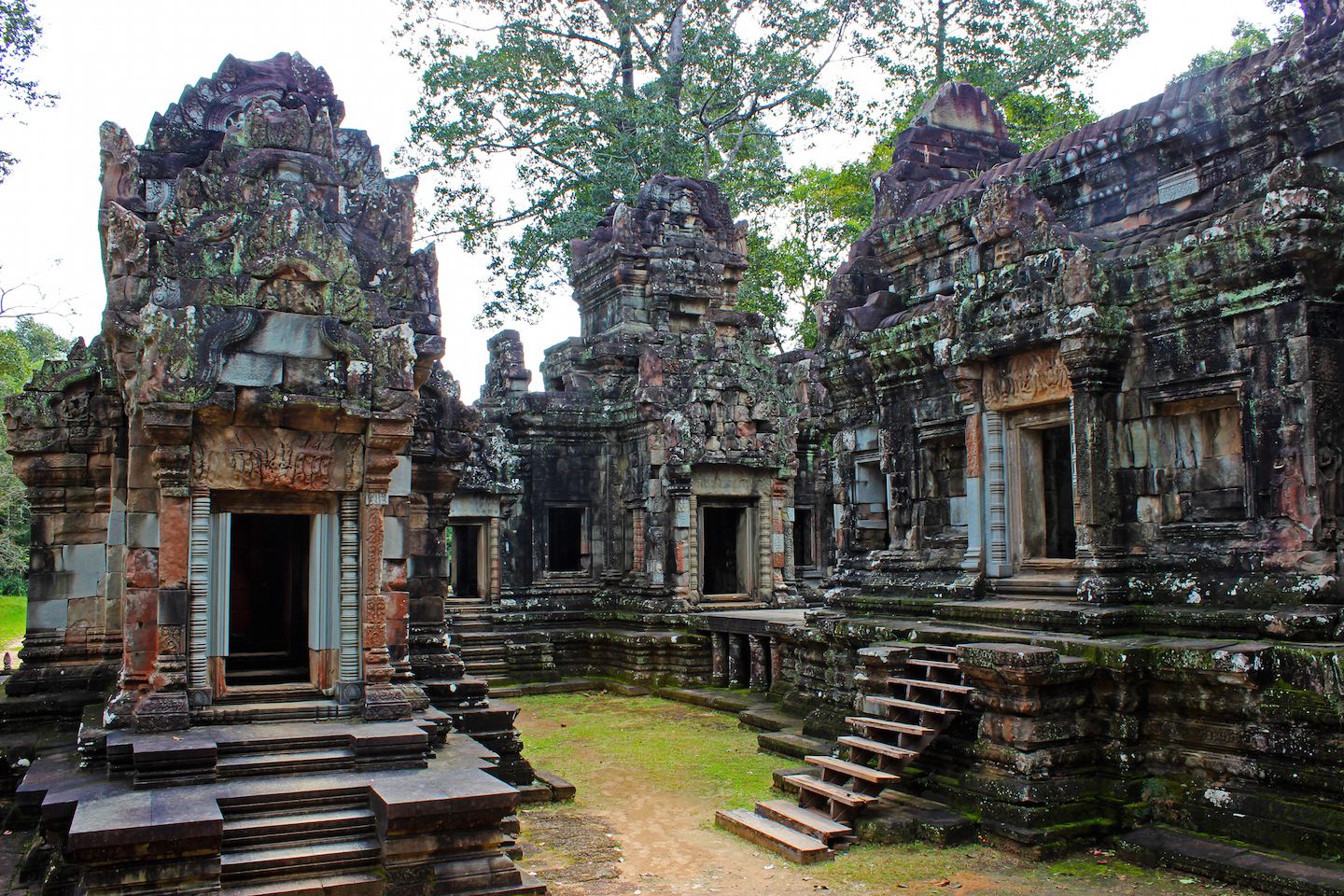
At this point, the temples started to look the same to us and some of the initial excitement wore off. Thus it worked out well that these were the last two individual temples we visited before entering the majestic city of Angkor Thom.
The highlight of the temples in Eastern Angkor was definitely Ta Prohm with its slightly overgrown, gently decaying atmosphere. I had really high expectations for Ta Prohm and the whole experience exceeded anything I could have imagined. It looked even better and cooler than it did in Tomb Raider! The other temples were also incredible and memorable, marking a great start to the first full day of temples.
For more pictures of Eastern Angkor, please visit the gallery!
